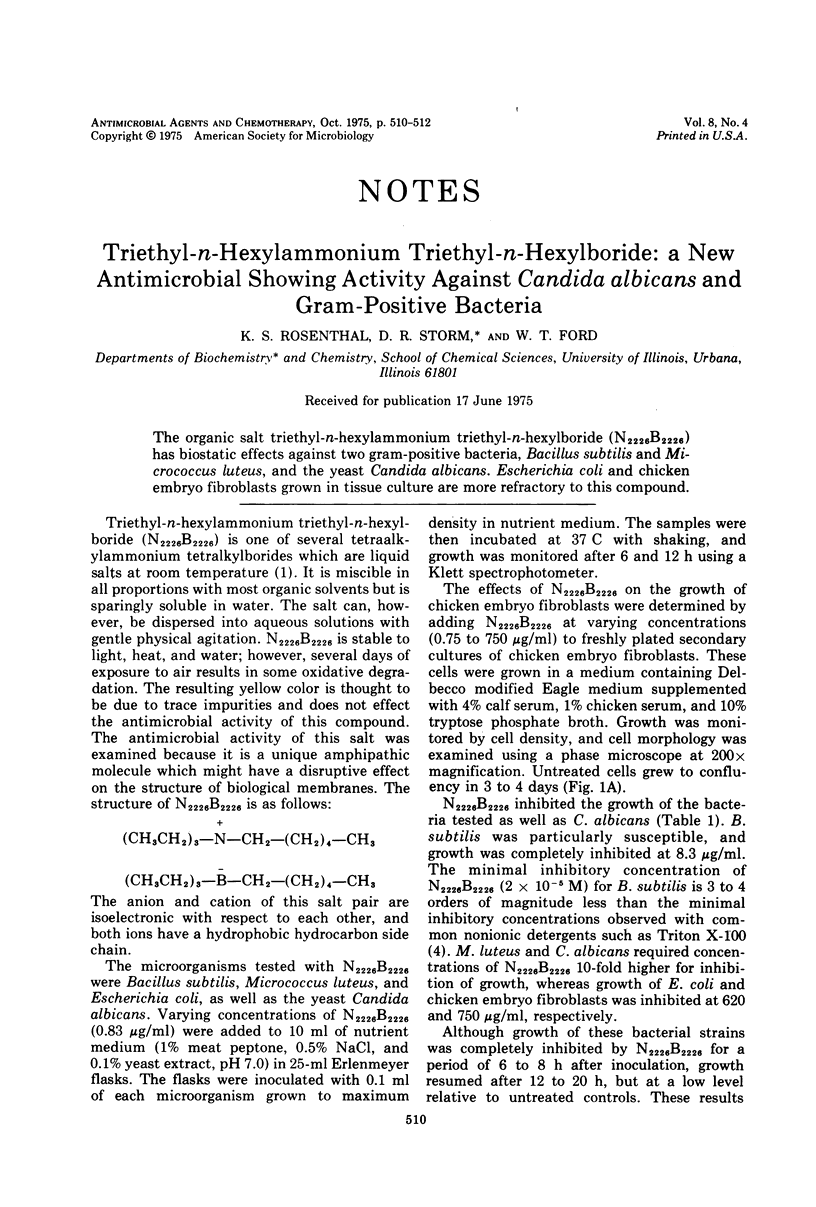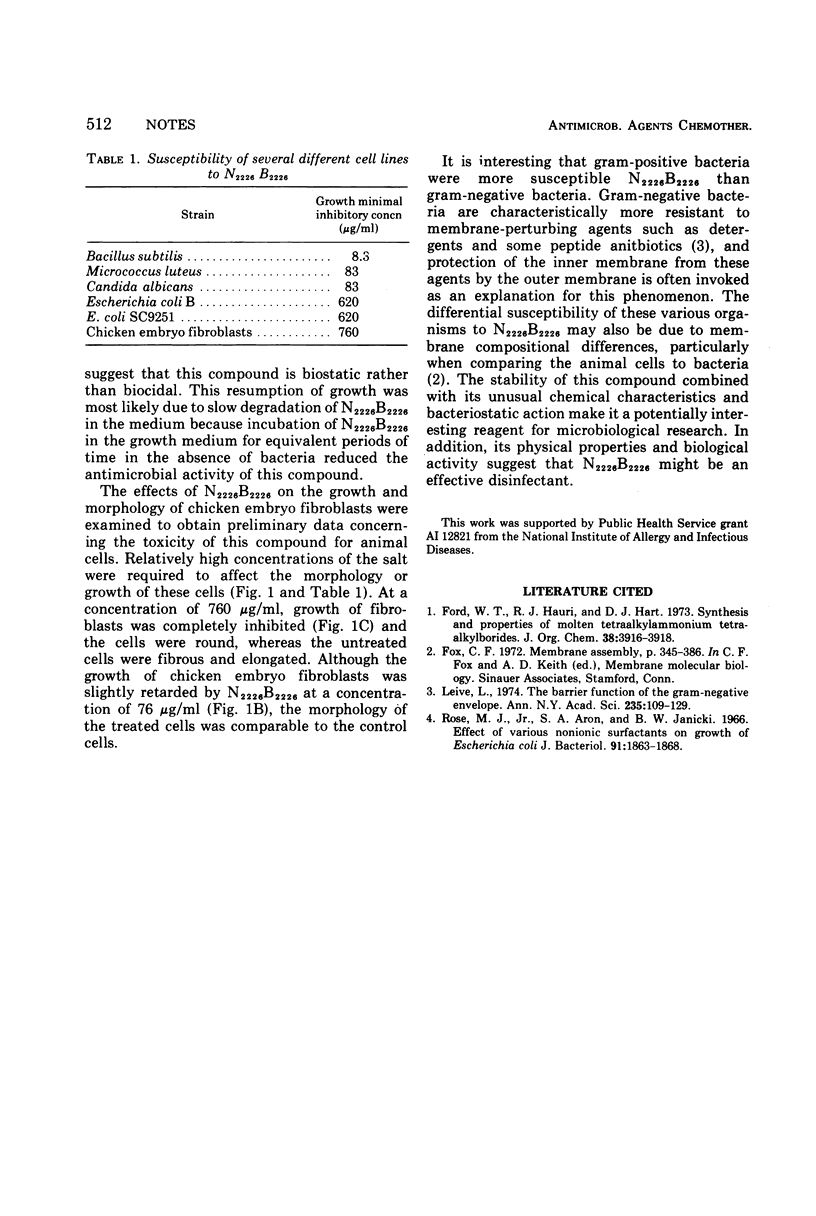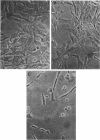Abstract
The organic salt triethyl-n-hexylammonium triethyl-n-hexylboride (N2226B2226) has biostatic effects against two gram-positive bacteria, Bacillus subtilis and Micrococcus luteus, and the yeast Candida albicans. Escherichia coli and chicken embryo fibroblasts grown in tissue culture are more refractory to this compound.
Full text
PDF


Images in this article
Selected References
These references are in PubMed. This may not be the complete list of references from this article.
- Leive L. The barrier function of the gram-negative envelope. Ann N Y Acad Sci. 1974 May 10;235(0):109–129. doi: 10.1111/j.1749-6632.1974.tb43261.x. [DOI] [PubMed] [Google Scholar]
- Rose M. J., Jr, Aron S. A., Janicki B. W. Effect of various nonionic surfactants on growth of Escherichia coli. J Bacteriol. 1966 May;91(5):1863–1868. doi: 10.1128/jb.91.5.1863-1868.1966. [DOI] [PMC free article] [PubMed] [Google Scholar]



